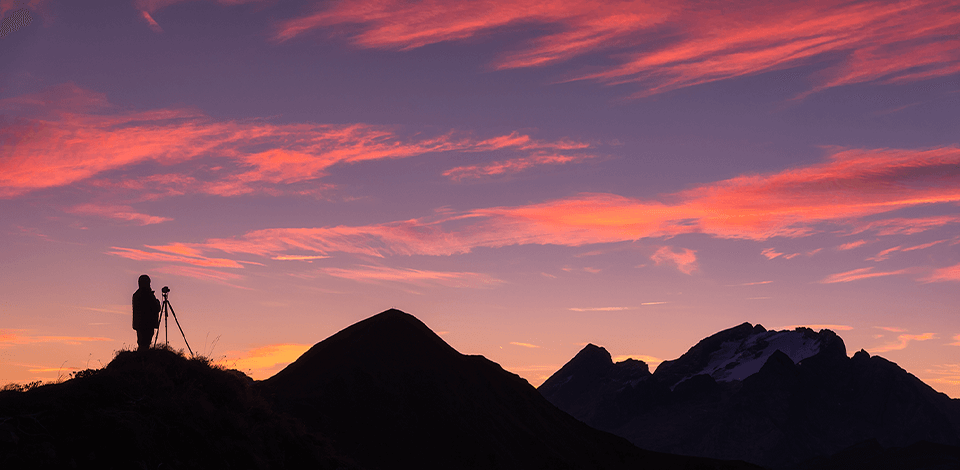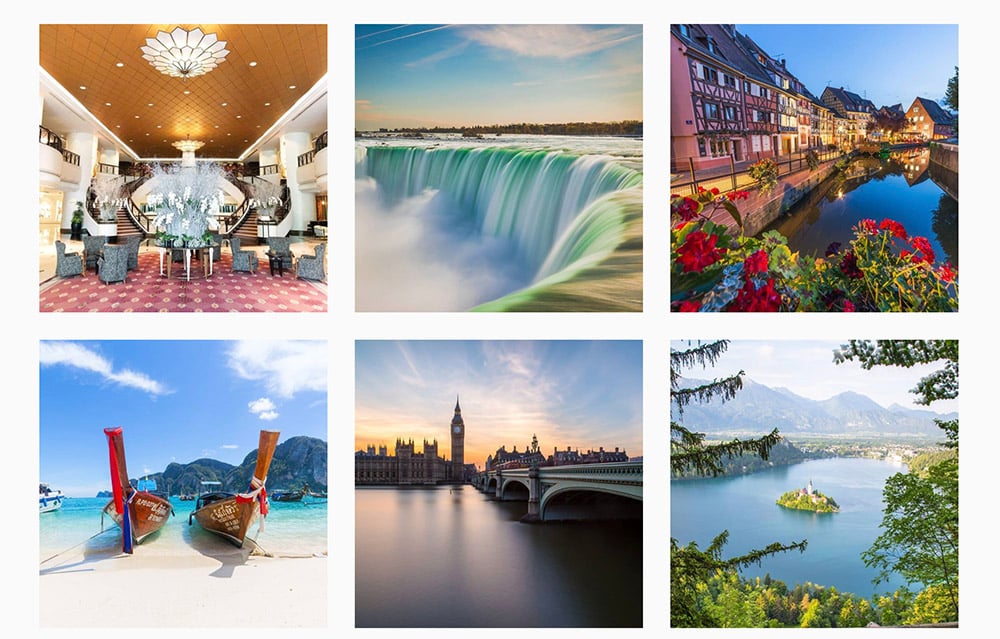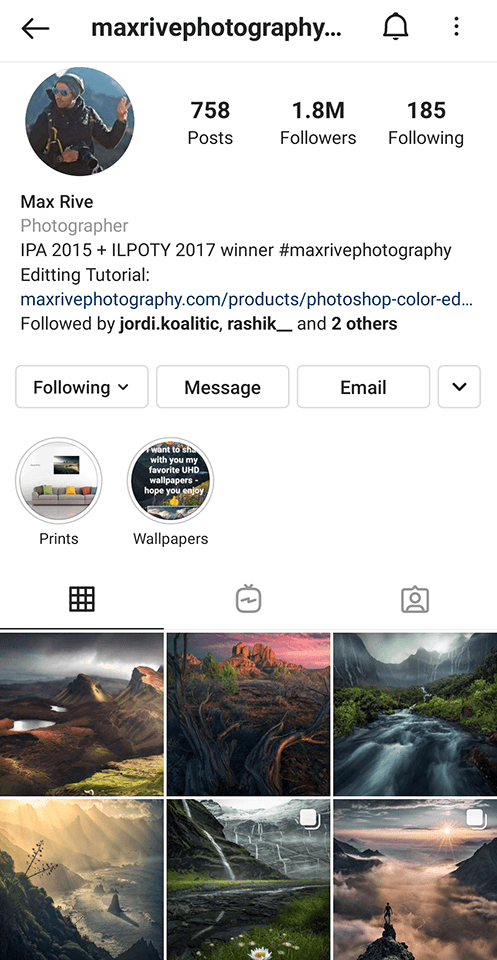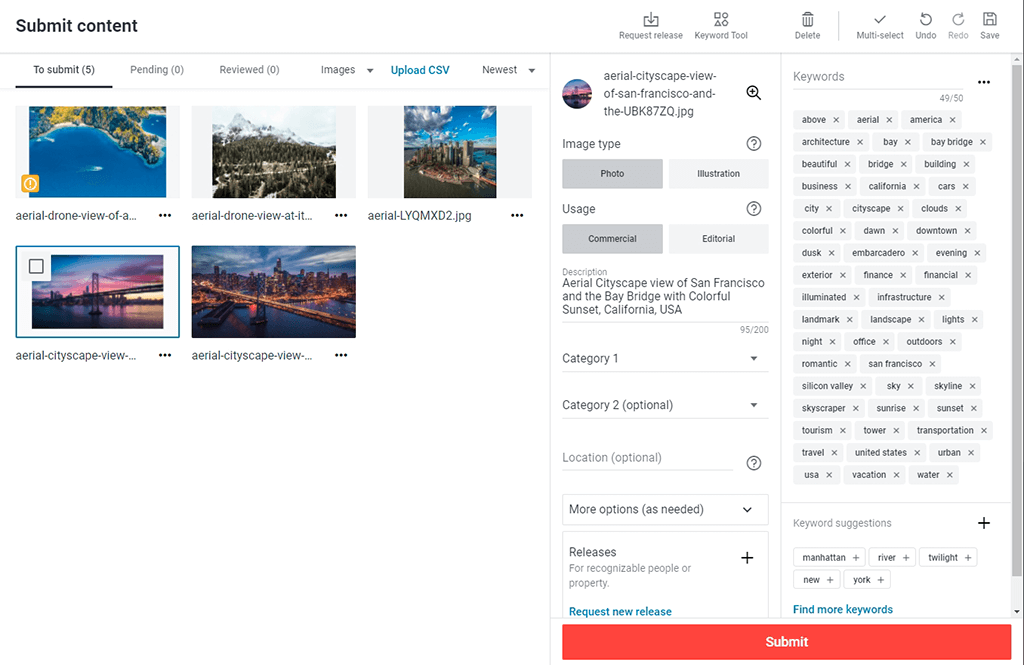
Do you like to observe nature and people through a wide-angle, telescopic, fixed, or fish-eye lens? Perhaps, it is worth thinking about pursuing a career in travel genre.
To achieve success in becoming a travel photographer, you should have a strong desire to travel as well as share your joy during a trip. Also, be ready to observe, explore and think over the composition.
To build a travel photography career, you need to do more than just visit unusual places and snap the shutter. You will need to be patient when creating a composition for a photo and developing your career.
Aside from handling busy schedules, you will need to be skillful enough to successfully promote your services. It is necessary to have an artistic approach and the right camera gear.
If you want to become a travel photographer, you will need to determine your purposes first. Ask yourself some questions to find out which goals you are going to achieve.
Think of which activities you would like to do to move in the right direction.
If you want to work as a travel photographer, it isn’t enough to buy a professional camera and a plane ticket. You need to know what camera settings are suitable for shooting landscapes, and what exposure to use for photographing during sunrise.
Beginners can boost their skills by taking online photography courses. You can find a short tutorial that outlines a specific subject or enroll a complete expert-led training. For example, the course by National Geographic photographer will explain how to take engaging travel images to leave your audience in awe.
You can take both free and paid courses. If you are on a budget, you can watch basic training videos on YouTube. If you like to learn from books, you can look for the ones written by experienced travel photographers. For example, study sample photos from The Travel Book.
The best way to discover something new and useful is to learn from masters. You will definitely learn something new while studying the works of such professionals as Paul Nicklen, Blake Gordon, Stephanie Sinclair, Palani Mohan, and Maggie Steber.

Once you find your niche and follow a particular genre, technique, and approach when practicing travel photography, you will certainly establish your unique style.
The list of the most popular photography niches: underwater photography, aerial and drone shooting, architectural photography, urban photography, portrait photography, landscape photography, nature photography.
Check out the most widely-used editing steps that any traveling photographer should know:
Radial filtering. If you want to emulate a strong light source, you can invert the mask and then increase the exposure and highlights of the radial filter. I usually use high feathering to produce a soft light in an image.
Graduated filtering. You can use this technique to make your shots deeper, draw viewers’ attention to the focal point and eliminate a feeling that you are missing out on something fundamentally important.
Tone curve. Photographers who work with the tone curve call this process 'crushing the blacks'. To use this technique, you need to drag the bottom left point to the right. After that, it is necessary to take the very end of the line at the point where it meets the left corner and drag it up on the vertical axis.
HDR. This feature is integrated into the camera. It involves shooting bracketed exposures by taking multiple shots of the same scene. The camera automatically changes the shutter speed with each different bracket to create different exposures. Choose the HDR mode in your camera. Once you import your pictures to Lightroom, you can easily combine them by clicking Photo Merge: HDR.
Color correction. Carefully examine your photo to determine which colors are displayed appropriately, and which ones appear desaturated. Instead of increasing the saturation of each color, choosing two or three closely related colors for enhancement (such as orange and teal) makes a big difference.
If you don’t want to spend much time improving your images, make sure to contact professional photo retouching services. Also, you can use Lightroom tools. With the help of presets, you can quickly tweak landscape, nature, and travel shots.

If you want to learn how to become a traveling photographer, you need to start by creating a professional portfolio. Whether you want to engage new clients or apply for an open position, you should provide a photography portfolio to showcase your expertise.
You can create a portfolio using a couple of proven methods. It is possible to demonstrate your works in a form of a PDF file. Thus, you can easily send it via email or messengers to your potential clients or HR specialists. It is advisable to use Adobe Acrobat when working with PDF files.
You can also upload your photos on such platforms as SmugMug, 500px, Zenfolio, and Squarespace.
Once you've completed the training and created your portfolio, feel free to search for clients. First off, it is necessary to engage local clients. Contact local hotels or tour agencies. They might be looking for fresh photo ideas to update their websites or social media platforms. You can get more returning clients by establishing relationships with a local operator.
If you want to learn how to be a travel photographer, you should know the effective ways to find clients. Here are some examples:

You can run a site or travel photography blog to demonstrate your talent. Even if you do not know how to write texts, you can still run your blog. Just focus on your photographs and keep words to a minimum.
After uploading photos on your website, you can promote them in search engines and track analytics using Google Analytics and other tools. If you want to build a good website, use an effective photography website builder.

You can also show off your works, tell travel stories and build your personal brand on social media for photographers. Create an Instagram account, share your photos, and add tags so that users can see what you have photographed in their area. You can also upload your shots on Behance, Facebook, and Pinterest.
Tips on how to work on social media:

If you want to boost your travel photography career, publish your works in a magazine. It is necessary to study the style of other photographs in this magazine, how many images you can publish, and the photographers whose works often appear on the pages. After that, email the editor and describe your ideas. You can attach a link to the portfolio so that the editor can examine it.

Feel free to choose such magazines as Outdoor Photographer, Black and White Photography, Dwell, F-Stop. Remember that most photos you see in popular magazines have been published for free. Nevertheless, this is an excellent way to promote your photography services and add new works to your portfolio.
Any camera can capture the experience of a new journey. However, if you are going to do photography professionally, it is advisable to purchase a DSLR, the best instant camera, or a mirrorless camera. Your camera should switch between different exposures and shoot in poor light conditions. Most importantly, consider investing in lightweight and portable camera gear to easily carry it with you.
If you want to become a travel photographer, pay attention to these camera models:
Different travel lenses allow you to play around with multiple photography styles. Wide-angle lenses are good for landscape shots, while telephoto lenses will allow you to take photos with the tiniest details.
Here are the most optimal lenses in my opinion:
A travel tripod is an indispensable tool for any photographer. Consider buying a compact pocket-sized tripod or the one you can carry on a plane.
Full-sized tripods are heavy and bulky, making them inconvenient to bring along on your trips. If you need a large tripod, shop for a model with expandable arms and an aluminum body. Top 2 tripods:

Regardless of the photography type you specialize in, you will probably need flashes, gimbal, and other equipment. Some photographers even travel with drones. Aside from a camera, lens, and tripod, you will also need such basic things:

The best time to shoot travel photos is the time shortly after sunrise or before sunset. You can capture the city as it transforms from empty streets to open shop windows and noisy sidewalks. Document how local people go home or have fun together in the bars after work.
It is possible to determine golden hours with the help of apps, such as Alpenglow for iOS and Photo time for Android smartphones.
If you have an opportunity, visit a location before shooting. It is especially useful if you have never been there before. In case you can physically scout your location, arrive at the desired place, and explore the area.
Take several test photos and note important aspects. Use dedicated note taking apps, such as Evernote, Notion, and OneNote, to quickly write down your thoughts. These products are available for both iOS and Android platforms.
Don’t worry if you can’t explore the location before the photoshoot. You can surf the web and examine the photos of any traveling photographer who has previously been to this place. It is also possible to watch videos of travel vloggers to find out the special features of a particular location.

You can make money using stock libraries. However, some websites may pay only 10 cents for a photo. Nevertheless, there are stock photography sites that offer pricing guidelines that meet industry standards. The best stock libraries are Adobe Stock, Shutterstock, and Pexels.
Many of these platforms offer top-tier quality photos. Once you sell your photo, you will get a commission. Although it isn’t big money, it is still a good chance to have additional income. Pictures of popular locations are in high demand on these websites.

Traveling for free in exchange for digital content is an excellent way to become a freelance photographer, meet new interesting people, take spectacular photos and save your budget.

If you are at the beginning of your travel photography career and want to enlarge your portfolio, you can address multiple institutions, such as Adventure Travel Trade Association (ATTA) and American Society of Travel Agents (ASTA), hotels, and hostels and ask for hosting in return for your shots. You will get a place to stay and have a meal and they will get photographs to promote their business.
You can try to organize photo tours. The main goal of such trips is to bring like-minded people together and search for the most vivid landscapes, rare natural phenomena, and perky local culture to document.
The cost of a trip may vary depending on the destination and expertise of the photographers. The complicated part of organizing photo trips is to make them legal and prepare the necessary documentation since the requirements are different in each region.

It is possible to sell the prints of your photos on your website or social media platform. Local art festivals and boutiques are a great way to showcase your skills and earn some money. You can even build a small business by printing your photos on different items, such as pillows, mugs, magnets, and T-shirts.
Pitch your work to magazines, travel blogs, and online publications. They often require high-quality images to accompany their articles and features. Build relationships with editors and establish a network within the publishing industry.
Reach out to travel companies, tourism boards, hotels, and resorts, and offer your services as a photographer. They may hire you to capture promotional images for their brochures, websites, and social media channels.
Share your knowledge and passion for photography by organizing photography tours and workshops in popular travel destinations. This can be a lucrative way to earn money while also providing a valuable learning experience for aspiring photographers.
Partner with travel brands, influencers, and bloggers who are looking for visually stunning content. Collaborations can range from sponsored trips to product placements in your photographs, generating additional income streams.